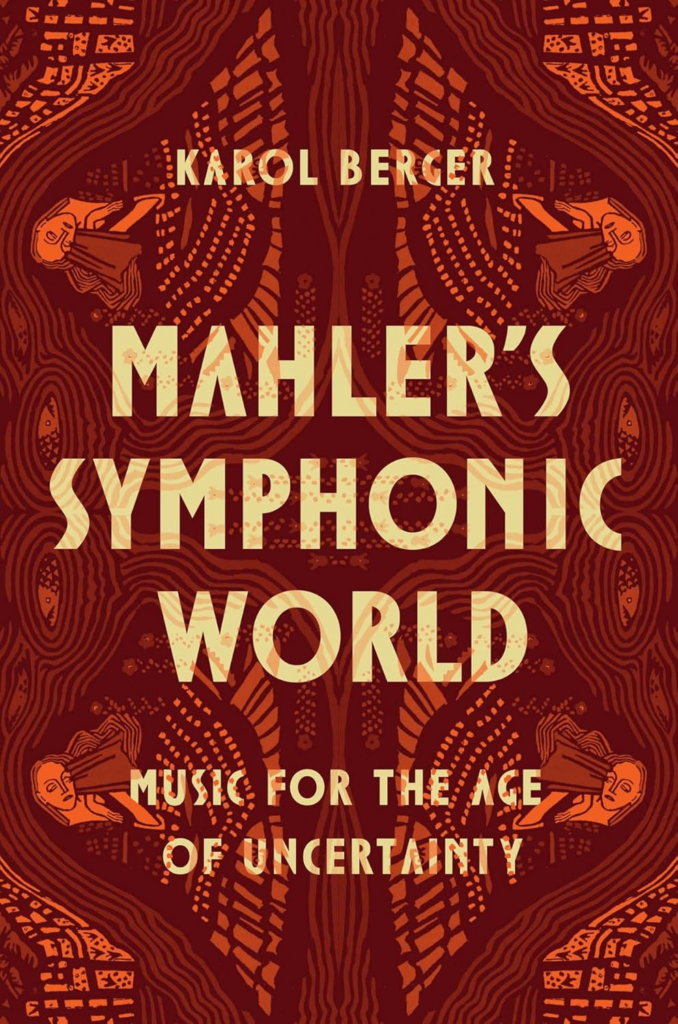My review of Karol Berger’s Mahler’s Symphonic World: Music for the Age of Uncertainty – “Finding a Mahler Message for Today” – was today published online by The American Scholar. You can read it here.
One starting point of Berger’s terrific new book is Theodor Adorno’s 1960 contention that Mahler’s gift was essentially pessimistic, that he did not succeed as an ostensible “yea-sayer.” Adorno was a frequent windbag. Berger, in rigorous disagreement, never obfuscates or fudges. He takes topics elsewhere a muddle and keenly finishes them off. I am thinking especially of his treatment of Mahler’s two most memorable leavetakings: the “Abschied” (“Farewell”) concluding Das Lied von der Erde (The Song of the Earth, 1909) and the Adagio finale of the Ninth Symphony (1910). Both vanish to wisps of tone.
Are these kindred versions of a sublime dissolution of the ego? Berger’s meticulous answer, bearing on Mahler’s state of mind in the wake of personal travail, is: not really. The ending of Das Lied admits no redemptive afflatus, no serene personal afterlife, no transcendental realm. Berger memorably writes:
“[Das Lied von der Erde] celebrates the earth but from the perspective of someone who knows that he is only a temporary guest on it and that he is about to take his leave. . . . Uniquely in Mahler’s oeuvre, no consoling vision of a transcendent beyond is on offer here: death is death and there is no hereafter to recompense us for its finality. The only consolation is that the earth will go on, forever renewing itself and offering its life, love, and beauty to others.”
This close consideration of Mahler’s serene submission to nature yields a personal note that feels exigent right now, with the world more distressed than at any point in Mahler’s lifetime. “We take it for granted that the earth is filled with so much beauty. We shouldn’t. Beauty is not like air or water, absolutely indispensable for our existence and survival. Humanity would have survived on a planet deprived of beauty. Beauty is something optional.” So Mahler, in Berger’s reading, is saying to us: “For me, this beauty [is] a gratuitous and welcome gift. And for this very reason, it seems a promise that the earth is not necessarily hostile, that it might potentially be a suitable, hospitable, delightful place for me and beings like me. When the time comes, I shall take leave of it with regret but also with gratitude.”
My review eventually digresses to ponder “Mahler and Schubert.” Of Mahler’s scherzos, Berger writes: “Invariably, these are marked by moments when the exuberance . . . threatens to become uncontrolled, sliding into something frightening and ghostly.” They are caught in an “inexorable temporal stream.” Berger adds: “Mahler must have been the first composer to attempt to capture in his music . . . the absurdity of existence.” But surely the first composer to do that was Franz Schubert. His “Die Krähe,” in the song cycle Winterreise, limns an unsettling and hallucinatory intimacy between a man existentially adrift and – his sole faithful companion—an ominous black bird. The cycle ends with a barefoot hurdy-gurdy man in the snow attended only by growling dogs. And in the second movement of Schubert’s Ninth, an “inexorable” march, “ceaselessly in motion,” becomes a juggernaut halting at the cusp of a cataclysm. Arthur Farwell’s scrupulous review of Mahler’s 1910 New York Philharmonic performance of Schubert’s Ninth – a document I have quoted half a dozen times in my books – here says it all.
That the Mahler template is already nascent in Schubert’s Ninth was brought home to me decades ago, because my main experience of the symphonies of Haydn, Mozart, Beethoven, and Schubert has always been at the piano, playing four-hand keyboard reductions. Only one of those symphonies could possibly work in concert as a piano duet: Schubert’s Ninth, the knitted textures of which are so pervasive, so active, that tremolos and other accompanimental formulae prevalent in the usual secondo parts are wholly absent.
My review further ponders Mahler and Schubert, then summarizes Karol Berger’s acute extrapolation of Mahler’s “worldview.” It ends:
“The eventual result of Berger’s exegesis is an intellectual underpinning for Mahler’s quest that both affirms its continued pertinence and supports its ‘yea-saying.’ . . . Mahler in Berger’s view “is the first major composer whose work as a whole embodied in music some of the most essential features of the [new] age, its pluralist perspectivism and its lack of foundations.” Though this existential quest never culminated in a single answer, Mahler – pace Adorno – is at all times painstakingly truthful. I find [Berger’s] reading of Mahler – the man, the composer – both credible and moving. In fact, it is essential.”
(I am rather recently the author of a novel: “The Marriage: The Mahlers in New York.” I have since turned it into a play, to be premiered in May 2026 at Colorado Mahlerfest.)


Leave a Reply